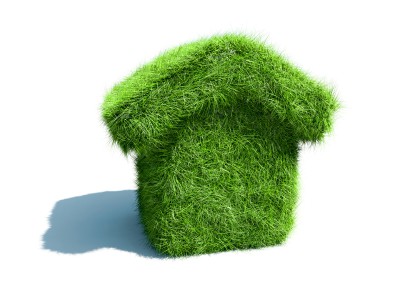The short answer: Yes!
When we ask whether or not something is green, we’re talking about its sustainability and the effect it has on climate change.
Some types of energy and materials are more sustainable than others. For example, we will run out of fossil fuels, but we will never run out of sunlight. So, solar power is sustainable. Gas and coal are not.
Climate change is being helped along by a build-up of greenhouse gases in the atmosphere. These gases are created when we burn fossil fuels either directly, or to generate electricity. These emissions are converted into units of carbon dioxide-equivalent when they’re counted up. That’s why greenhouse gas emissions are also called “carbon emissions” or just “carbon.”
Of course, other issues, such as pollution, are also important aspects of environmental stewardship.
The materials and assemblies that are used in construction go through a cycle of use:
At each of these stages, energy is used and emissions are created. The first six phases are referred to as a home’s embodied energy. When a house is torn down, its embodied energy is lost. Because of embodied energy, the longer a home lasts, the less energy and emissions are associated with it, on average, per year.
Number six is the use phase. The less energy a home uses during this phase, the more sustainable it is. Sustainability during the use phase depends on how big the house is, how well it’s insulated, how efficient its mechanical systems are, and what percentage of renewable energy it uses.
Number seven is the end of life phase. Houses constructed of recyclable, non-toxic materials are better for the environment than houses that leave behind a lot of waste.
Following are some of the advantages of our steel homes as they move through these phases.

Steel is a material that’s recycled and recyclable. When you build a home based on an MBMI steel building, it will have a significant amount of recycled material already in its metal parts. That eliminates the whole extraction phase for a percentage of the material.
When a steel house reaches the end of its service life, its metal parts will, once again, be recyclable.
A steel-framed home is strong and is not likely to be damaged by weather or normal wear and tear. It has a very long potential service life. After many decades of use, the roofing and siding may need to be replaced. However, the frame could last for centuries. A house with a long service life makes the best possible use of its embodied energy.
MBMI steel buildings, including homes, are easy to put together using basic tools. It’s oftentimes not even necessary to hire a contractor. There’s much less energy expended in the construction process than there is when a standard wood-framed house is built.
A steel frame can easily support solar panels or solar shingles. Creating renewable energy offsets the energy needed to run the mechanical systems.
Woodhouses need to be painted or treated every few years in order to stay watertight. The color on metal siding and roofing is much longer-lasting. That means fewer toxic chemicals are added during the life of the house, and fewer chemicals go into the landfill when it’s demolished at the end of its lifecycle.
A house built on a steel frame is just as easy to insulate as a wood house. It will also have fewer thermal bridges or breaks in the insulation. That improves energy efficiency.
MBMI has performed an analysis of its materials and methods for use with the LEED green building rating system. MBMI can work with other standards for sustainable building, as well. Ask us about LEED points, solar panels, recycled materials, and energy efficiency!